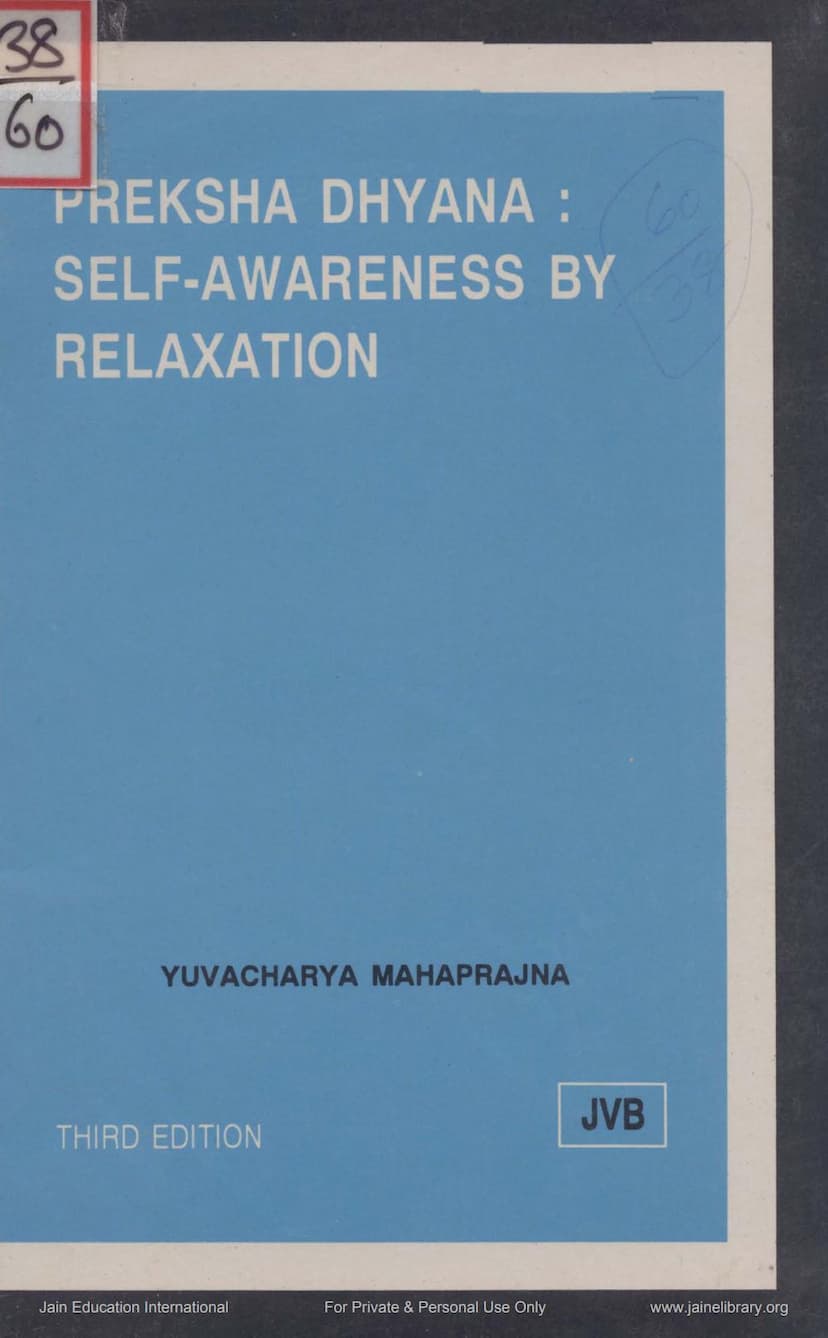Preksha Dhyana Self Awareness By Relaxation
Added to library: September 2, 2025

Summary
This document is an excerpt from "Preksha Dhyana: Self-Awareness by Relaxation" by Yuvacharya Mahapragna, published by Jain Vishva Bharati. The book is part of the "Science of Living" series and aims to present ancient Jain wisdom in a modern scientific context to help individuals achieve peace, happiness, and integrated personality development.
The core of the book revolves around Preksha Dhyana, a meditation technique focused on self-awareness through relaxation. It addresses the pervasive "age of tension" caused by industrialization and urbanization, which leads to psychosomatic diseases. The text proposes that the remedy lies not in drugs but in developing inherent powers through proper living, including mindful eating, drinking, breathing, and thinking.
The book emphasizes Kayotsarg, which translates to "total relaxation of the body accompanied by full awareness of the real self." It explains that relaxation is a crucial pre-condition for meditation. By suspending bodily motion, achieving silence, and slowing respiration, one can steady the mind and prepare for deeper concentration.
Key concepts and benefits discussed include:
- The Scientific Understanding of Stress: The book details the physiological response to stress, involving the hypothalamus, pituitary gland, adrenal gland, and the sympathetic nervous system, leading to the "fight or flight" response. It explains how prolonged activation of this mechanism causes disorders like hypertension and heart disease.
- The "Relaxation Response": It introduces the concept of the "trophotropic response" or "relaxation response" as an innate mechanism that counteracts stress by promoting restorative processes. This can be activated through autosuggestion.
- The Technique of Relaxation (Kayotsarg): The book outlines the step-by-step process of achieving deep relaxation, primarily through autosuggestion, focusing on relaxing each part of the body. It contrasts this with hypnotism, emphasizing that Kayotsarg is a self-controlled process.
- Philosophical Aspects: It delves into three types of tension: muscular, mental, and emotional, with emotional tension being the most detrimental. Kayotsarg is presented as a form of "physical meditation."
- Self-Awareness and Self-Realization: A central theme is the journey towards self-awareness, where one realizes the separateness of the spiritual self from the material body. Kayotsarg facilitates this by leading to a state where the physical body is forgotten, and the true self is experienced.
- Benefits: The book enumerates benefits on physical, mental, and spiritual levels, including relief from tension, improved concentration, revitalization of organs, enhanced operational efficiency, emotional balance, and ultimately, the development of wisdom and the capacity for abandonment.
- No Theological Dogma: Preksha Dhyana is presented as a universal technique accessible to everyone, regardless of their background, and does not require adherence to any specific religious belief.
- Practical Application: The text mentions that training camps are organized, and thousands have benefited from this practice, leading to improvements in physical and mental health.
In essence, "Preksha Dhyana: Self-Awareness by Relaxation" offers a systematic approach to managing stress and achieving inner peace and self-understanding through the practice of Kayotsarg, grounded in the principles of Jain philosophy and aligned with modern scientific understanding of the human body and mind.